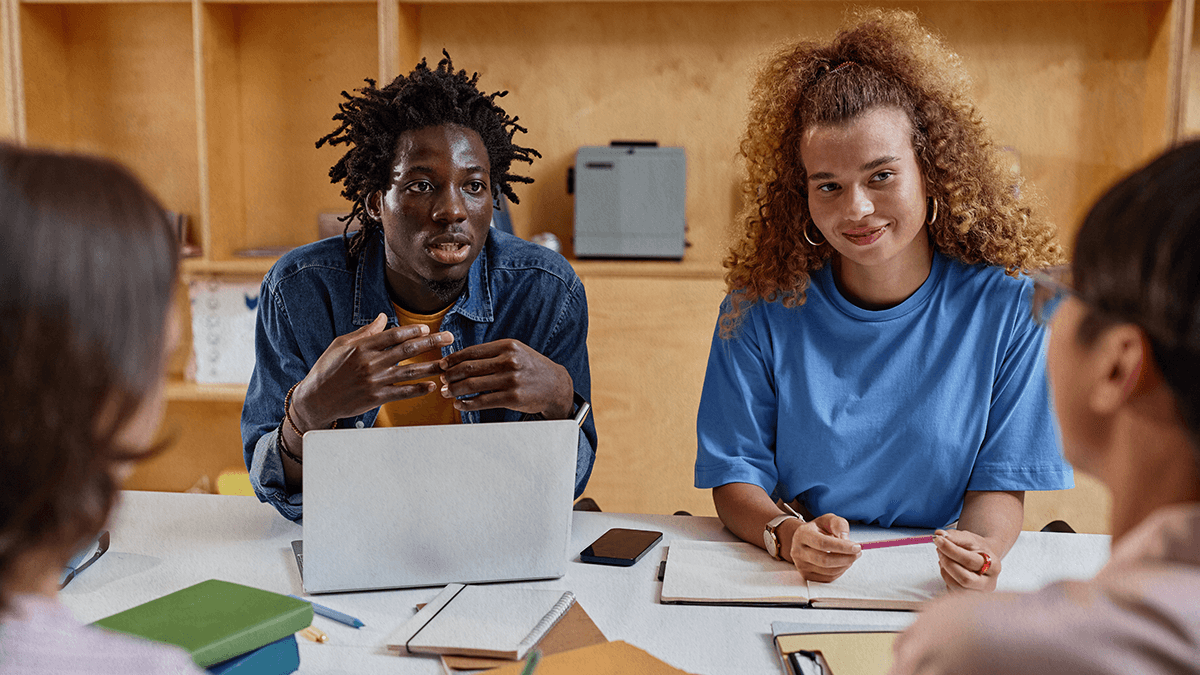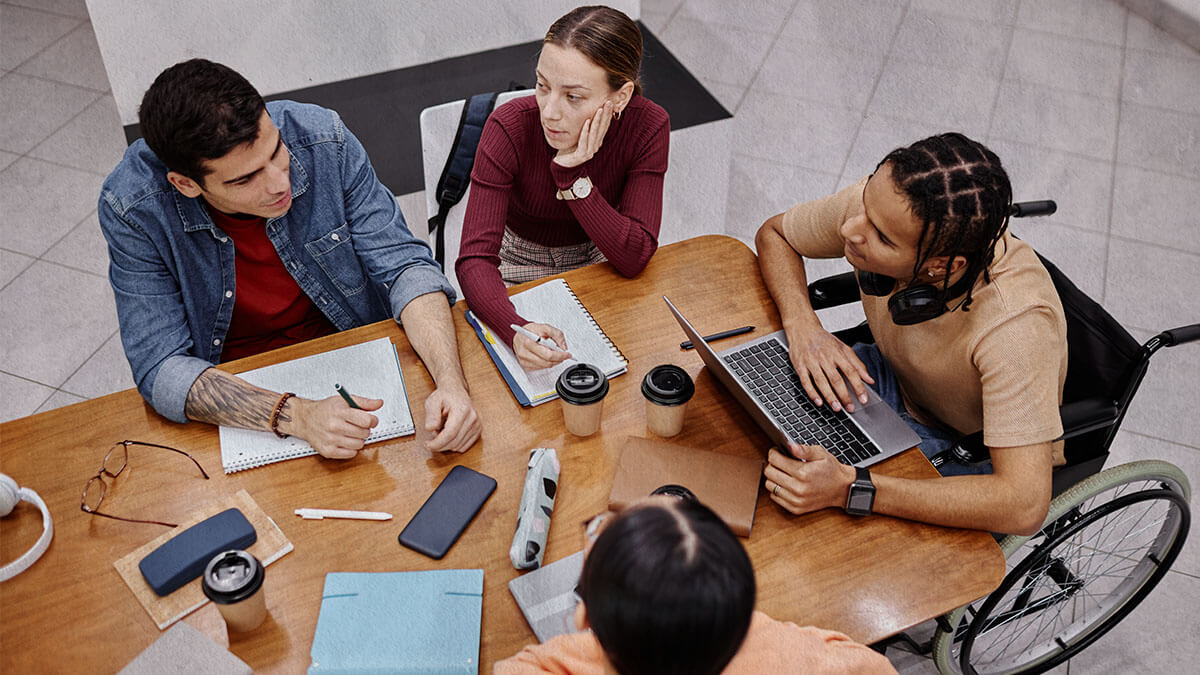
Inclusive Language — Beyond Advertising
11/07/2024 | Agência Fome | PostsFinally, the old ads, full of stereotypes and standardized phrases, were left behind. After the dictatorship, the media grew and the advertising movement gained strength in Brazil. And with it came the breaking of standards, generalizing everything in an eternal search for limits, which still did not exist at the time. “How far is it acceptable to go to sell and entertain?” Naked women in vehicle advertisements, children with fetish masks, priests singing on motorcycles, black people represented only as marginalized or sexualized beings. LGBT+ people? They only existed when it was time to make fun.
The audience, which has always been diverse — but was forever kept locked away in advertising closets — has now gained visibility. This requires representation. When a brand uses language that excludes no one, it is saying that it values all people. No more “ladies and gentlemen” or “boys and girls”; the point is to speak to “people”. It is simple, direct and, above all, inclusive.
— Okay, I get it. It’s easy to change the masculine gender to “people”. What’s so difficult about this subject?
That’s where you’re wrong, everyone reading this article. Replacing masculine pronouns with genderless words can be quite complicated when we can see beyond that.
You don’t have to look very far to understand the daily difficulty of this change: Consulting doctors, my teachers told me to, my parents raised me, politicians lie… Absolutely everything we use to talk about people is attributed to the masculine gender.
Technically, this rule comes from our native language, which decided to make grammar more complicated when they chose to separate human beings (and things) into genders. Therefore, when defining that Portuguese would follow this path, they limited themselves to creating the rule: when including one or more people in a sentence, the masculine gender should be attributed to avoid headaches caused by verbal confusion and agreement errors (and also because back in the Mesozoic era – when they thought of this, society was immensely more patriarchal. But that’s another, longer topic, let’s leave it for next time).
And so we continue with the binary, the division between genders accepted by society, to this day. But let’s face it, today we have many female doctors, single mothers or female couples, teachers and politicians. It’s high time to at least update the way we communicate.
— And how can I fix this without breaking the language rules?
Now we are speaking the same language! Inclusive or non-sexist language is one that seeks to communicate without excluding or making any group invisible and without changing the language as we know it. This language proposes that people express themselves in a way that no one feels excluded using words that already exist.
There’s no point in creating brilliant campaigns if the language used is still segregating. In order for a person to feel represented, they need to be named. Imagine the negative impact of a message that unintentionally leaves someone out. Or even worse: excludes your entire audience. People want to see themselves in the brands they consume. They want to belong, to feel like they’re part of something bigger. Using neutral and inclusive language shows that the brand is up to date and cares about everyone. And let’s face it: being inclusive is never too much.
In addition to engaging the public more, inclusive language avoids unnecessary crises. The internet is unforgiving. Having to deal with boycotts because a piece or campaign was considered insensitive is a non-bailable crime in advertising these days. Here’s a tip: be careful with your words as you are with your profits. And preventing this mistake is extremely simple — the key is inclusion. The more diversity in the creation of pieces, the more likely they are to achieve good results.

GET UPDATED! It’s the best way.
Advertising, as powerful as a megaphone in a public square, needs to keep up with modern times. Some people say it is “trendy” to stand up for minority rights, but if respect and recognition of diversity are on the rise, humanity can still be saved. Using terms that encompass all people, regardless of gender, is not a fad. It is a necessity. If advertising is the soul of the business, inclusion is the heart that keeps everything running smoothly. But it is important to know how to transform our vocabulary so that there is no unnecessary noise in communication.
We know that our words and attitudes help shape the environment in which we live. This is a movement worth participating in, being an active voice, on the front line in engaging your team. Applying inclusive language is not just a change of words, it is a change of perspective. It will not be easy, nor will it happen overnight, but it is a path of no return. And that is a good thing, right? Because always seeing the same clichés gets tiring. We want more diversity, more empathy. Inclusion also means valuing your business. So, brands, it is time to update your vocabulary and show that everyone has value.
We on the FOME communications team are very open-minded when it comes to diversity. We are always changing, modernizing and including everyone in our texts and languages, so that the greatest number of people can come into contact with inclusive texts. We do not use generalized masculine terms, we are looking for simple words that do not segregate any type of minority, so that this form of our language can increasingly become commonplace in our daily lives.
Want to learn with us?

Fome Mini Guide to Inclusive Business Language — BASIC LEVEL (no excuses for staying out of this)
- When referring to groups of people, use alternative ways of representing:
Os líderes da empresa >> Lideranças da empresa
Os diretores >> A diretoria
Os coordenadores >> A coordenação
Os deputados >> O Congresso ou A Câmara
- We replace masculine plurals with generic terms:
The boys >> The kids
Os administradores >> Time de administração
- When we use nouns that have the same form in the masculine and feminine plural, we remove the articles or pronouns that determine gender:
Nossos clientes >> Clientes da empresa
Os heads de inovação >> Heads de inovação
- For nouns that vary according to gender, we use “pessoas”:
Developers >> People who are developers or people who develop
Employees >> People who work at the company
Executives >> People in executive positions
Event participants >> People who attended the event
- When we give instructions or make calls to action, we use you as the main pronoun:
Entrepreneurs participate in the Local Panel before the International Selection >> You will participate in the Local Panel before the international selection
Candidates must submit the case within 3 business days >> Submit your case in 3 business days
Got interested >> Are you interested?
Stay updated >> Keep updating yourself
- Quando formos usar “aquele que” e “aqueles que”, substituímos pela palavra “quem” ou pela expressão “as pessoas que”:
Somos a tribo dos que olham o lado cheio do copo, dos que acreditam que sempre dá pra fazer >> Somos a tribo de quem olha o lado cheio do copo, de quem acredita que sempre dá pra fazer.
- As a generalization of humanity, we refer to the deeds of human beings as being “of man”. To replace, use the word that best fits the sentence (society, humanity, human being), or by using “if” after the verb:
The arrival of man on the moon. >> The arrival of humanity on the moon.
In the Middle Ages, man believed that the earth was flat. >> In the Middle Ages, it was believed that the earth was flat.
Within the advertising market, we have many groups of people marked by gender: entrepreneurs, investors, mentors, service professionals, creatives, directors, copywriters… A good way is to choose to emphasize and repeat nouns in the feminine and masculine as a way of marking the female presence.
- Evite o uso de “eles” substituindo pelo verbo a executar, por “quem” ou “alguém”:
Eles precisam ir ao mercado. >> A turma/O time/Essas pessoas precisam ir ao mercado.
Vou enviar pra eles verificarem. >> Vou enviar para ser verificado.
- When we use the feminine and masculine forms together, bringing the feminine first:
Empreendedoras e Empreendedores são reconhecidos…
Parceiras e Parceiros participam…
Investidoras e Investidores…
Redatoras e redatores do time criativo…
Diretoras e diretores de arte…
Elas e eles…
- When we write internal communications – such as online messages, emails or shared documents – we can adhere to the slash, with the feminine form first:
Empreendedoras/es e Mentoras/es
Fundadoras/es…
- Para mencionar pessoas não-binárias – aquelas que não se identificam nem com o gênero masculino, nem com o gênero feminino -, substituímos as letras “a” e “o” em adjetivos para tornar essas palavras ainda mais neutras.
Existem vários sistemas de linguagem não-binária. Um dos mais utilizados é o elu. Neste caso, o “u” substitui a terminação de pronomes que indicam gênero. Já para palavras terminadas em “a” ou “o”, usamos “e”:
Ele >> Elu
Dela >> Delu
Todos >> Todes
To learn more about the subject, we recommend following non-binary people, like Jupi77er, and experts on the subject, like Janaisa.
Racist/ableist/ageist terms to remove from your vocabulary:
- Troque índio por pessoa indígena; tribo por povos ou nações.
- Tirar do vocabulário: expressões pejorativas como “programa de índio” ou “bugre”.
- Termos que joguem negatividade na cor preta, como “denegrir”.
Swap:
Black market >> illegal market.
Blacklist >> prohibited/negative list.
Black magic >> witchcraft/occultism.
Dark humor >> acid humor.
- The terms clear, white, white should be used without a positive meaning:
He was very clear >> He was very direct.
Clear text for everyone >> Text accessible to everyone.
- Remove from vocabulary: “creole”, “crazy creole samba”, “bad hair”, “color of sin” as a generalization of people.
- Ableist terms to avoid:
Entrance for the disabled >> Entrance for People with Disabilities.
Exceptional child >> Child with an intellectual disability.
My child is special >> My child has a disability.
Vision problem >> Having a visual impairment.
Dwarf >> Person with dwarfism/short stature.
Autistic >> Person with autism/within the autistic spectrum.